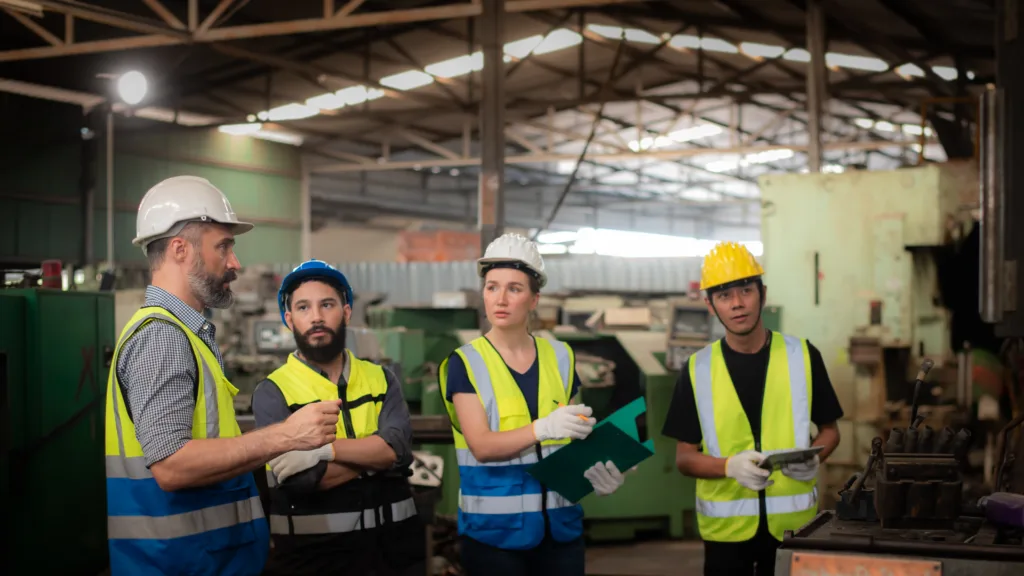In an era where the construction industry is thriving and simultaneously evolving, managing your costs has become the fulcrum on which success pivots. Every builder, general contractor, and stakeholder feels the pressure of maximizing output while keeping costs in check. But why is construction cost management such a big deal?
At its core, construction cost management is about maintaining a balance. It ensures that every dollar spent is accounted for and maximizes the project’s value. Yet, it’s no secret that this is easier said than done. Between unexpected delays, evolving project scopes, and the ever-present challenge of material costs, the path to efficient cost management can feel like navigating a maze.
If you’ve ever asked yourself, “How can I improve construction cost management?” you’re in the right place. This guide promises not just theoretical advice but actionable strategies. As we delve deeper, we’ll explore the importance of this aspect of construction and provide a roadmap on how to improve construction cost management to ensure your projects remain profitable and on track.
Let’s embark on this journey to secure your construction venture’s financial health.
Table of Contents
Understanding Construction Cost Management: The Cornerstone of Successful Builds
If we were to simplify the complex construction world, we’d find that it’s an intricate dance of quality, time, and cost. Among these, managing construction costs effectively can determine the difference between a successful build and a financial misstep. So, what exactly is construction cost management?
In essence, construction cost management is the process of planning, controlling, and coordinating a project’s budget, ensuring that costs don’t spiral out of control. The linchpin of successful cost management ensures you receive maximum value for every dollar spent. But it’s not just about crunching numbers. It encompasses a variety of components that come together to shape the financial narrative of a project.
Key Components of Construction Cost Management:
- Labor: The backbone of any construction project. Efficiently managing labor costs involves optimizing work hours, reducing downtime, and ensuring the right skills are in the right place.
- Materials: From bricks to beams, the cost and quality of materials can significantly influence the project’s bottom line. Strategic procurement and efficient inventory management play pivotal roles here.
- Equipment: Whether renting or buying, decisions about equipment can impact project timelines and costs. Regular maintenance and timely upgrades can avert unexpected expenses.
- Overhead: These are the indirect costs – site utilities, rentals, and even the cost of financing. These may not be tied to a specific task but are essential for the project’s completion.
- Contingencies: The unexpected expenses. Good cost management allocates a portion of the budget to handle unforeseen events without derailing the project.
Navigating through these components can seem overwhelming. Yet, it becomes a manageable, even rewarding, challenge with the right strategies, software tools, and mindset. As we journey further, we’ll equip you with tools and insights to master this realm, ensuring your construction ventures are structurally sound and financially robust.
The Downfalls of Neglecting Cost Management: A Pricey Oversight in Construction
Imagine meticulously designing a building, from its grand entrance to the intricate details of its interiors, only to realize the costs have escalated beyond your budget. It’s a chilling scenario for anyone in the construction realm. The truth? This is a tangible risk when cost management takes a backseat. But what are the actual consequences of sidelining this critical component?
Bluntly put, neglecting construction cost management is akin to setting a trap for project derailment. While overspending might seem like the apparent repercussion, the ripple effects extend further.
Unraveling the Consequences:
- Compromised Profit Margins: Every unplanned expense eats into your profit. This doesn’t just jeopardize the project’s financial viability but can also strain future endeavors.
- Project Delays: Exceeding the budget might necessitate pausing the construction, sourcing additional funds, or renegotiating contracts – all of which can set your timeline back.
- Strained Stakeholder Relations: When budgets spiral, trust erodes. Stakeholders, be they clients, suppliers, or investors, become wary, potentially impacting long-term partnerships.
- Quality Sacrifices: To cut corners and rein in the ballooning costs, there might be a temptation (or even a compulsion) to compromise on the quality of materials or craft.
- Legal Hurdles: Contracts often come with clauses tied to budgets. Overstepping these bounds can lead to disputes, hefty fines, or litigation.
- Reputation Damage: News travels fast in the age of online reviews and social media. A project plagued by poor cost management can tarnish your brand’s image, making it challenging to secure future opportunities.
Realizing the importance of cost management isn’t just about preventing overspending; it’s about safeguarding your project’s integrity, relationships, and reputation in the competitive construction landscape.
As we pivot to solutions, remember this: proactive cost management isn’t just a best practice—it’s the cornerstone of successful construction ventures in this ever-evolving industry.
Top 10 Strategies to Elevate Your Construction Cost Management: Ensuring Every Dollar Counts
The construction industry is not for the faint of heart. Between managing materials, labor, and timelines, the challenges are endless. But when it comes to financials, that’s where the actual game is played. So, how can one optimize every expenditure and ensure maximum returns? Here are ten tried-and-true strategies to refine your construction cost management.
1. Detailed Planning and Budgeting: Building a Financial Blueprint for Success

If there’s one universal truth about construction, it’s this: every monumental structure begins with a solid foundation, from skyscrapers to cozy homes. And while we often think of this in terms of concrete and steel, the same principle applies to a project’s finances. It’s impossible to overstate the importance of meticulous planning and budgeting when charting a construction venture’s course. So, where do we start?
Groundwork Matters: Every journey begins with a single step, and in construction cost management, that step is comprehensive planning. Before you break ground or even finalize a design, crafting a detailed financial map is essential. This means outlining every phase, pinpointing each resource, and setting aside provisions for unforeseen expenses. This groundwork ensures you’re not blindfolding your project’s financial journey.
Key Components of Effective Planning:
- Scope of Work: Define the project’s boundaries. What does the project entail, and just as importantly, what doesn’t it include?
- Timeline Estimations: Develop a precise schedule, breaking down every project phase. This will help you identify when expenditures will peak and taper off.
- Resource Allocation: From workforce to machinery, know what and when you’ll need it.
Realistic Allocations: In an ideal world, every project would come under budget, with money to spare. But in the actual construction world, where myriad variables come into play, rooting your budget, in reality, is vital. Basing your financial projections on overly optimistic scenarios can lead to severe shortfalls.
Tips for Crafting a Grounded Budget:
- Past as Predictor: Analyze previous projects for insights. What did you overlook? Where did you overspend?
- Stay Informed: Keep abreast of market trends. If steel prices are forecasted to rise, factor that into your budget.
- Contingency Funds: Always set aside a buffer for unexpected expenses, typically 10-20% of the total budget. This isn’t pessimism—it’s prudence.
In essence, detailed planning and budgeting in the construction industry aren’t just about allocating funds—it’s about envisioning the trajectory of the entire project. When this foundation is robust, you ensure that your construction venture isn’t just a towering achievement in architecture and a masterclass in financial acumen.
2. Regular Cost Monitoring: Keeping Your Financial Pulse Steady and Strong

Every construction enthusiast knows that the beauty of a structure isn’t just in its final form but in the ever-evolving process of its creation. Similarly, managing the budget of a construction project isn’t a one-time act—it’s a dynamic process that demands regular attention. As your project progresses, costs can shift, influenced by market dynamics, on-ground realities, and unforeseen challenges. How do you ensure these shifts don’t throw your construction budget further off track?
Stay Informed: In construction cost management, knowledge truly is power. You’re equipped to make informed decisions with real-time insight into where every dollar is going. Instead of waiting for an end-of-the-month shocker, regular check-ins allow for mid-course corrections, saving time and money.
Key Aspects of Efficient Cost Monitoring:
- Dynamic Dashboards: Utilize digital tools that offer live expenditures updates, ensuring you’re never out of the loop.
- Milestone Checks: Every time the project hits a significant milestone, deeply dive into the finances. Are you on track or drifting off course?
Tech Assistance: The digital age has gifted construction with tools that make the cost management process feel less like a chore and more like a superpower. With software solutions offering granular insights into cost tracking and predictive analytics, you’re not just tracking past expenditures but also forecasting future ones.
Harnessing Technology for Cost Control:
- Cost Estimation Software: With precision and speed, these tools offer detailed breakdowns, helping you understand where the budget flows.
- Integration is Key: Opt for platforms that integrate with your procurement, labor management, and inventory systems. This holistic view can spotlight inefficiencies that might otherwise go unnoticed.
- Mobile Accessibility: Choose software that allows site managers and team leads to input data on the go, ensuring real-time accuracy.
In conclusion, regular cost monitoring is the lighthouse guiding your project’s financial ship, ensuring it stays clear of the treacherous waters of overspending. It’s the difference between proactively navigating challenges and reactively scrambling to fix financial mishaps. By staying informed and leveraging technology, you can ensure that your construction project’s finances remain as sturdy as the structure itself.
3. Risk Management: Navigating the Financial Uncertainties of Construction

The world of construction, while rewarding, is fraught with uncertainties. From unpredictable weather patterns affecting your timeline to sudden material shortages escalating costs, the road to completing a project is rarely without its bumps. But here’s the good news: with effective risk management strategies, you can transform these challenges from formidable foes to mere hiccups in your journey.
Anticipate and Prepare: They say fortune favors the prepared, and nowhere is this more accurate than construction cost management. The essence of risk management lies in foreseeing potential pitfalls and arming yourself with strategies to mitigate their impact.
Essential Steps in Risk Forecasting:
- Historical Analysis: Delve into past projects and industry data to spot recurrent challenges. Was there a labor strike that affected your timeline? Did a global event cause a spike in material costs?
- Scenario Planning: Play the “What if?” game. Create various scenarios, from the mildly challenging to the extreme, and chalk out responsive action plans.
Mitigate Proactively: While forecasting is about seeing the storm on the horizon, mitigation is about building a robust shelter. Proactive mitigation ensures that their impact on your budget and timeline remains minimal, even when challenges arise.
Tools and Strategies for Risk Reduction:
- Diversified Suppliers: Don’t put all your eggs in one basket. By partnering with multiple suppliers, you safeguard against potential shortages or price hikes from a single source.
- Contract Safeguards: Ensure your contracts have clauses that protect you against sudden cost inflations, delayed deliveries, or other potential pitfalls.
- Insurance Cover: From general liability to builder’s risk insurance, invest in comprehensive coverage that shields your project from unforeseen financial drains.
Ultimately, risk management in construction isn’t about avoiding risks entirely—that’s an impossible feat. Instead, it’s about ensuring that you’re neither caught off-guard nor financially derailed when the unpredictable strikes. By anticipating challenges and proactively setting safeguards, you pave the way for a project that stands tall, both structurally and economically.
4. Investing in Technology: The Modern-Day Alchemy in Construction Cost Management

Age-old images of brick, mortar, and manual labor might come to mind when we think of construction. However, just as the world evolves, so does the realm of construction. Now, more than ever, the sector is undergoing a digital metamorphosis, with technology playing the role of the catalyst. For those keen on sharpening their construction cost management edge, embracing this technological revolution isn’t just recommended—it’s essential.
Why Tech Matters: In an era where every penny counts and efficiency is the name of the game, technology offers a dual advantage. It can streamline operations and bring forth data-driven insights, ensuring that your financial decisions are rooted in concrete information rather than a gut feel.
The Technological Titans in Cost Management:
- Building Information Modeling (BIM): This 3D model-based process not only aids in design but also in detecting potential issues before they arise, saving time and money.
- Cloud-Based Software: With the ability to access project data from anywhere, cloud platforms ensure you’re always in sync with your team, suppliers, and stakeholders, fostering real-time collaboration and decision-making.
- Artificial Intelligence and Machine Learning: By analyzing past projects and market trends, AI can forecast potential cost overruns, giving you a heads-up to take proactive measures.
A Worthy Investment: While integrating technology does come with its upfront costs, the long-term ROI (return on investment) is undeniable. Think of it less as an expense and more as an investment that pays rich dividends in the form of reduced overheads, fewer errors in project costs, and swifter project completion.
Steps to Seamlessly Integrate Technology:
- Training is Key: Ensure your team is well-equipped to utilize new tools. Offer regular workshops and training sessions.
- Pilot Programs: Before a full-scale rollout, test the waters with pilot programs. This lets you identify potential hiccups and streamline processes.
- Stay Updated: Technology is ever-evolving. Regularly revisit your tech stack, ensuring you’re leveraging the latest and greatest in the field.
In conclusion, the digital age presents a goldmine of opportunities for those in the construction business. By investing in technology, you’re adapting to modern times and setting the stage for a future where precision, efficiency, and profitability reign supreme in construction cost management.
5. Efficient Procurement Strategies: The Art of Smart Sourcing in Construction

Every culinary enthusiast knows that the secret to a spectacular dish doesn’t just lie in the chef’s skills and the quality of ingredients sourced. Similarly, in the sprawling world of construction, the success of a project is significantly influenced by the materials and services procured. Efficient procurement isn’t about cutting costs haphazardly but optimizing expenses while ensuring top-tier quality.
Why Sourcing Smartly Counts: The materials and services you procure form the backbone of your construction endeavor. Choosing the right partners, products, and strategies can spell the difference between a project that thrives and one that barely survives in the fierce realm of construction cost management.
Strategies for Savvy Sourcing:
- Competitive Bidding: Encourage multiple vendors to submit their bids. This ensures competitive pricing and gives you an array of choices.
- Bulk Purchasing: Whenever possible, buy in bulk. Economies of scale can lead to significant cost savings without compromising on quality.
- Localized Procurement: Sourcing materials locally can cut transportation costs and reduce the carbon footprint, making your project cost-effective and eco-friendly.
Forge Strong Relationships: Building strong ties with suppliers isn’t about mere transactions but crafting partnerships. Suppliers who view you as a valued partner are more likely to offer favorable terms, prioritize your orders, and go that extra mile when the unexpected occurs.
Building Bonds in Business:
- Clear Communication: Be transparent about your needs, budget constraints, and timelines. Open dialogue fosters understanding and mutual respect.
- Timely Payments: Ensure your payments are prompt. This not only strengthens trust but can also open doors to discounts and preferential treatment.
- Feedback Loops: Constructive feedback, both praise and critique, can help suppliers improve their offerings, benefiting both parties in the long run.
In a nutshell, procurement in construction is an intricate dance between cost efficiency and quality assurance. By using cost data, refining your strategies and nurturing supplier relationships, you position your project for optimal financial health, ensuring that every penny spent maximizes value and propels your venture closer to its grand vision.
6. Value Engineering: Unearthing More Bang for Your Buck in Construction

In the orchestra of construction, every instrument plays a pivotal role, from the foundational beat of the drums to the delicate notes of a violin. Similarly, every component of a construction project holds significance. However, what if there was a way to achieve the same grandeur and the same functionality but with smarter choices and more cost-efficient methods? Enter the realm of value engineering.
Deciphering Value Engineering: At its core, value engineering isn’t about cutting corners or compromising quality. It’s about analyzing a project deeply, understanding its objectives, and finding alternative solutions that offer the same or even better quality at a reduced cost. It’s the art of intelligent optimization in construction cost management.
The Pillars of Value Engineering:
- Function Analysis: Dissect the project into its core functions. What is each component’s primary role? Once identified, explore if some alternative methods or materials fulfill the same position more efficiently.
- Life Cycle Costing: Instead of considering the initial costs, delve into the long-term. How will maintenance, energy consumption, and durability impact project lifespan costs? Opt for solutions that might have a slightly higher upfront cost but promise long-term savings.
- Collaborative Approach: Engage multiple stakeholders in brainstorming sessions, from architects to engineers. Different perspectives can unearth innovative solutions that one might overlook.
The Added Perks: Beyond the obvious financial benefits, value engineering can also lead to improved project timelines, reduced wastage, and enhanced sustainability. It’s a strategy that not only appeals to the wallet but also to the conscience.
Maximizing Project Value:
- Ongoing Reviews: Instead of relegating value engineering to the project’s initial stages, conduct regular reviews. As the project evolves, new opportunities for optimization might emerge.
- Embrace Tech: Use tools like Building Information Modeling (BIM) to visualize alternatives and their potential impact.
- Feedback and Lessons: Post-project, collate insights on what worked and what didn’t. This treasure trove of information can guide value engineering in future endeavors.
In conclusion, value engineering is like the seasoned chef conjuring up a gourmet meal using simple ingredients without burning a hole in the pocket. By focusing on functionality, long-term costs, and collaboration, you can ensure your construction project doesn’t just stand tall but also stands smart, delivering exceptional value for every dollar spent.
7. Continuous Training of the Team: Building Brains as Well as Brawn in Construction

It’s an old adage: a chain is only as strong as its weakest link. In the dynamic construction world, this chain comprises bricks, steel, mortar, and the human minds and hands that craft these elements into architectural marvels. Yet, ensuring your team stays updated in the ever-evolving landscape of techniques, technologies, and trends is crucial. This is where continuous training becomes the unsung hero of impeccable construction cost management.
Why Training Matters: Even the most skilled artisan can falter without the right tools and knowledge. As construction methodologies evolve, so should your team’s expertise. Training ensures they can handle modern challenges, make efficient decisions, and drive cost-effective results.
Pathways to Empowerment:
- Skill Enhancement Workshops: Regular workshops can introduce your team to the latest tools, software, and best practices in the construction domain.
- On-site Training: Real-world scenarios offer the best lessons. Periodic on-site training sessions, guided by experts, can instill practical insights and hands-on experience.
- Online Courses: The digital age brings knowledge to your doorstep. Encourage team members to enroll in relevant online courses. Some platforms even offer certifications that can be valuable additions to their professional portfolios.
Beyond Just Skills: Training isn’t limited to just honing technical prowess. Soft skills, like communication, leadership, and problem-solving, are equally vital. They ensure smoother team collaborations, efficient stakeholder interactions, and quick, effective resolutions to unforeseen challenges.
Building a Culture of Learning:
- Incentivize Learning: Offer rewards or recognition for team members who actively engage in training programs or acquire new certifications.
- Feedback Loops: Post-training, gather feedback. Understand what resonated with the team, what didn’t, and how the training modules can be improved.
- Mentorship Programs: Foster an environment where seasoned professionals mentor newcomers. This not only aids in skill transfer but also strengthens team bonds.
To wrap it up, think of continuous training as the nutrition that fortifies your construction project. A well-trained team doesn’t just execute tasks; they innovate, optimize, and ensure that every step taken strives toward superior quality and cost-efficiency. Training is an investment that consistently delivers unparalleled returns in the grand scheme of construction cost management.
8. Effective Communication: The Silent Scaffolding of Superior Construction Projects

Picture this: a symphony orchestra with every musician playing to their rhythm, unaware of the overall melody. Chaos, right? Similarly, in the vast construction arena, the absence of clear, consistent communication can lead to a cacophony of misunderstandings, errors, and cost overruns. In this intricate ballet of beams, bolts, and budgets, effective communication is the invisible conductor, ensuring every move harmonizes with the grand vision of construction cost management.
The Cornerstone of Clarity: In the multilayered fabric of a construction project, multiple threads of information continuously weave in and out. Whether it’s updated from the site, feedback from stakeholders, project details or modifications in design, ensuring that every piece of data reaches the right ears at the right time is paramount.
Bricks of Brilliant Communication:
- Transparent Documentation: Every decision, every change, and every milestone should be documented clearly. Not only does this provide a reference point, but it also ensures accountability and minimizes ambiguities.
- Regular Meetings: Scheduled team meetings, both on-site and off-site, offer a platform for updates, discussions, and brainstorming. It’s where challenges are highlighted, solutions are proposed, and collective progress is reviewed.
- Tech Tools: With the boom in digital solutions, tools like project management software, instant messaging apps, and video conferencing platforms can streamline communication and ensure real-time updates.
Listening: The Other Half of the Equation: Effective communication isn’t just about disseminating information. It’s also about active listening. Understanding concerns, acknowledging feedback, and respecting diverse perspectives can lead to a more holistic and inclusive approach to project execution.
Crafting a Culture of Open Dialogue:
- Feedback Channels: Establish dedicated channels where team members can voice their feedback, suggestions, or concerns. An open-door policy can foster trust and a sense of ownership among the team.
- Conflict Resolution: Differences in opinions are natural. However, having clear protocols for conflict resolution ensures that these differences lead to constructive outcomes rather than disruptive clashes.
- Training in Communication: Just as technical skills are vital, so is proficiency in communication. Consider organizing workshops that focus on enhancing communication skills within the team.
In essence, think of effective communication as the blueprint that guides the construction journey. It’s the force that aligns individual efforts, bridges gaps, and ensures that every stakeholder, from the project managers to the architect to the laborer, works symphony towards the shared goal of impeccable construction and optimal cost management.
9. Lean Construction Practices: Trimming the Fat without Cutting Corners

In the culinary world, the most admired chefs can whip up delectable dishes using minimal ingredients, waste little, and still leave diners craving more. Similarly, in the construction domain, there’s an approach that mirrors this efficiency: Lean Construction. It’s the art and science of producing high-quality structures with fewer resources, less waste, and maximum value. In the quest for impeccable construction cost management, embracing lean practices is akin to finding the golden recipe.
Defining Lean Construction: Derived from manufacturing methodologies, lean construction aims to enhance value for the customer while minimizing waste. It’s not just about cost-cutting but optimizing processes to ensure every ounce of effort and every penny spent adds genuine value to the project.
Key Ingredients of Lean Construction:
- Streamlined Workflow: Analyze every stage of the construction process. Identify bottlenecks, unnecessary steps, and inefficiencies. Once identified, streamline them to ensure a smoother, faster, and more cost-effective workflow.
- Just-in-Time Delivery: Instead of stockpiling materials, arrange for them to be delivered just when needed. This reduces storage costs, minimizes the risk of material damage, and ensures you’re using the latest products.
- Collaborative Decision-Making: Engage all stakeholders in collaborative decision-making processes, from designers to contractors. This holistic approach often leads to more efficient and innovative solutions.
The Domino Effect of Waste Reduction: Cutting down on waste doesn’t just save materials. It reduces the need for storage, minimizes handling efforts, curbs the risk of damages, and can even lead to quicker project completion.
Building with a Lean Vision:
- Continuous Improvement: The lean approach isn’t a one-time initiative. It’s a mindset of continuously seeking ways to improve. Post-project reviews, feedback collection, and regular training can keep this mindset sharp.
- Empower the Ground Team: Those on the frontline often have the most insightful suggestions. Create an environment where even the ground-level workers feel empowered to suggest improvements.
- Use of Technology: Tools like Building Information Modeling (BIM) can help visualize the entire project, making it easier to identify potential waste or inefficiency areas.
Simply put, lean construction practices are like the culinary secrets of a master chef. They allow you to conjure architectural masterpieces with efficiency, precision, and an unmatched focus on value. In the sprawling world of construction cost management, going lean is the secret sauce to achieving more with less.
10. Regular Audits and Reviews: The Health Checkups of Your Construction Project

Imagine going on a cross-country road trip without checking your car’s vitals. Skipping oil checks, tire pressure evaluations, or engine assessments can lead to unwanted breakdowns. Similarly, regular audits and reviews act as crucial pit stops in the sprawling journey of construction projects, ensuring that everything runs smoothly and efficiently. They are the diagnostic tools in your construction cost management toolkit, helping identify potential issues before they escalate into costly problems.
The Why Behind Audits and Reviews: Just as a routine medical checkup can spot early signs of health issues, regular project audits and reviews can highlight inefficiencies, discrepancies, and potential risks. By identifying these early, projects can stay on track in terms of timelines and budgets.
Essentials of Effective Audits:
- Financial Scrutiny: At its core, an audit should meticulously review the financial aspects. This includes checking budgets, assessing expenses, and ensuring no unaccounted-for costs.
- Process Analysis: Beyond just money, reviewing the processes is vital. Are there redundant steps? Are there newer, more efficient methods to replace existing ones?
- Stakeholder Feedback: Audits should be inclusive. Feedback from various stakeholders, from ground workers to top-tier managers, can offer diverse insights and a 360-degree view of the project’s health.
The Proactive Approach of Reviews: While audits often look for discrepancies, reviews are more forward-looking. They assess the current state and chart out strategies for future phases of the project.
Cultivating a Review Culture:
- Scheduled Checkpoints: Don’t wait for a problem to trigger a review. Instead, have scheduled checkpoints where project status is assessed, and plans for the following stages are discussed.
- Use of Technology: Leverage digital tools for data collection and analysis. Technologies like AI can help predict potential risks or forecast resource requirements, making reviews more data-driven and accurate.
- Openness to Change: Reviews might suggest alterations in the approach or strategy. Cultivate a flexible mindset where the team is open to making these changes for the betterment of the project.
In summation, regular audits and reviews are like the lighthouses in the vast construction ocean. They guide the ship, ensuring it avoids hidden icebergs and sails smoothly toward its destination. For anyone serious about impeccable construction cost management, these aren’t just optional checkups; they’re mandatory, regular health assessments ensuring the project’s vitality and success.
A Glimpse into the Future: Emerging Trends in Construction Cost Management

They say change is the only constant. This couldn’t be truer for the dynamic world of construction cost control. Just as architects draft ever-evolving designs and engineers introduce newer materials, the sphere of construction cost management is continuously influenced by emerging trends. Staying ahead of these trends isn’t just about keeping pace—it’s about setting the pace, ensuring that projects are efficient, innovative, and future-proof.
The Digital Blueprint: In an age dominated by technology, it’s no surprise that digital advancements are spearheading changes in construction cost management. From virtual reality to AI-driven predictions, the future looks digitized, optimized, and incredibly exciting.
Trailblazing Trends to Watch Out For:
- Artificial Intelligence (AI) and Big Data: AI isn’t just for sci-fi movies anymore. By analyzing vast amounts of data, AI can forecast budgetary trends, predict potential cost overruns, and even suggest areas of savings.
- Virtual and Augmented Reality (VR & AR): Imagine walking through a building that still needs to be built! VR & AR can offer virtual walkthroughs, aiding design decisions, spotting potential challenges, and ensuring stakeholder buy-in.
- Prefab and Modular Construction: Efficiency is the name of the game. With prefab components and modular units, construction can be quicker, less wasteful, and often more cost-effective.
- Sustainable and Green Building Practices: As the world focuses on sustainability, green building practices aren’t just an environmental boon—they’re proving to be cost-effective in the long run, with savings on energy and maintenance.
Embracing the New while Respecting the Old: While it’s crucial to integrate emerging trends, it’s equally important to remember the timeless principles of construction cost management. Detailed planning, regular reviews, and effective communication will always be the bedrock upon which these new trends stand.
Preparing for Tomorrow, Today:
- Continuous Learning: Encourage teams to stay updated with the latest construction technology and management practices. Workshops, seminars, and training sessions can bridge the knowledge gap.
- Collaboration with Tech Experts: Building strong partnerships with tech experts can ensure that integrating new technologies is smooth and optimized for the project’s needs.
- Experimentation: Not all trends might fit every project. It’s okay to experiment, assess, and then adopt what works best.
Peering into the crystal ball of construction cost management reveals an innovative, sustainable, and streamlined future. It’s a future where buildings rise faster, last longer, and resonate with the environment and the wallet. As we stand on the cusp of this exciting tomorrow, it’s the perfect time to embrace, adapt, and innovate.
Conclusion: Crafting the Blueprint of Efficient Construction Cost Management
Much like a well-orchestrated symphony, construction demands the right notes, harmony, and rhythm. Cost management is the unsung maestro that ensures the melody is beautiful and economically sound. From understanding the essence of construction cost management to assimilating the transformative trends shaping its future, we’ve navigated the multifaceted world of building with an eagle’s eye on managing construction costs well.
But why all this focus on cost management? Simply put, it’s the backbone of sustainable construction. Projects that don’t keep a vigilant watch on expenses risk financial setbacks, reputational damage, delayed timelines, and compromised quality.
The strategies we delved into aren’t mere suggestions; they’re essential instruments in the toolkit of any astute construction professional. Detailed planning, regular monitoring, leveraging technology, and constant training aren’t just buzzwords—they’re the pillars that uphold successful construction projects. And as we brace for a future glistening with technological advancements, embracing these emerging trends in construction cost management is no longer optional—it’s imperative.
In this vast and evolving arena, one sentiment stands timeless: Building is not just about erecting structures; it’s about crafting legacies. By marrying age-old principles with cutting-edge practices, we can ensure that these legacies are not only magnificent but also economically astute.
So, as we draw the curtains on this exploration, let’s commit to integrating meticulous cost management at every phase, ensuring our constructions stand tall, both in stature and financial prudence.
Use Bauwise cost management software
Project managers can easily forecast construction project costs, improve cost control, and reduce project costs with Bauwise construction cost management software. With Bauwise, you can mitigate cost and budget risks, manage project budgets, and ensure you make profit.
Effective construction cost management is crucial to end your construction project successfully. Effective cost control means using cost management practices that make your cost management process as streamlined as possible. Ensure your construction budget is managed well with construction cost control techniques.
About the Author

Taavi Kaiv
Taavi Kaiv is a construction specialist with over ten years of experience in the construction industry. Taavi is an accomplished construction project manager with many successful projects that have been completed under his guidance. Taavi holds a master’s degree in construction management from the Tallinn University of Technology. View profile
Related posts
Read our articles where you can find useful and relevant information about construction cost management:
- Construction cost management: All you need to know
- How to Manage Construction Costs: A Comprehensive Guide
- Ultimate guide to construction cost management
- 10 Tips to improve cost control in your construction projects
- Understanding construction cost control
- Construction Cost Management FAQ
- Mastering Construction Cost Planning in Construction Projects






